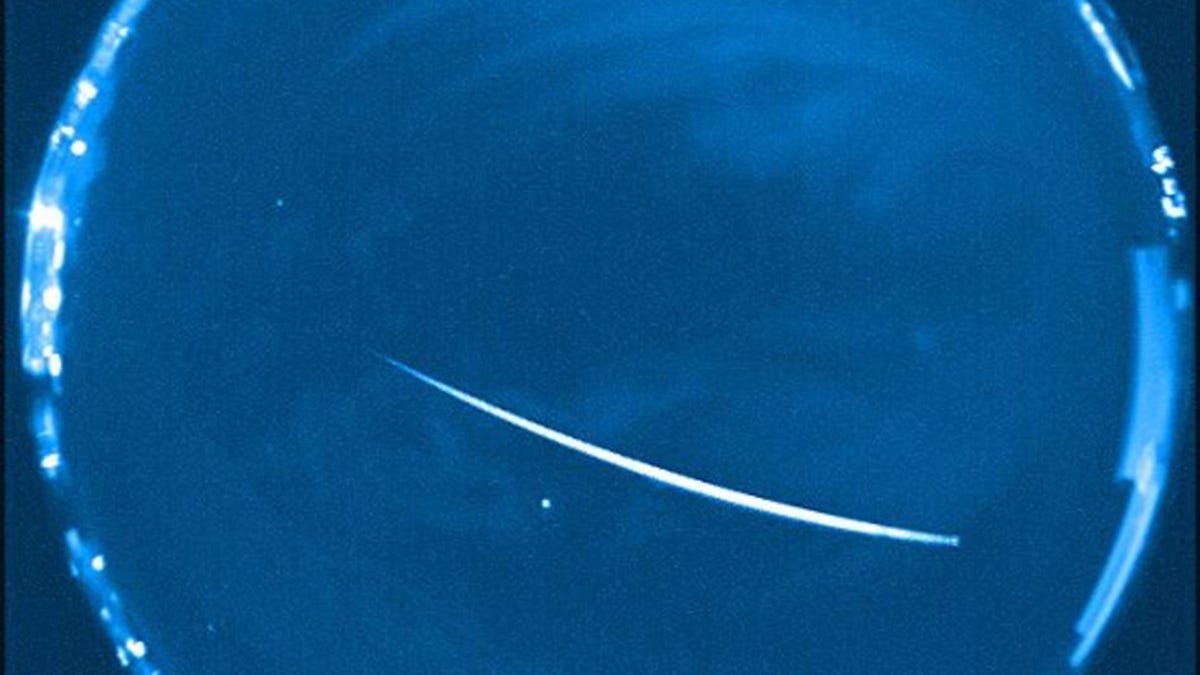Geminid 2021 meteor shower peaks tonight: How to see the shooting stars
Winter sky watchers will want to bundle up for a show that tends to deliver year after year.

A Geminid meteor caught in its final, flaming moments.
This year's Geminids, the annual meteor shower the American Meteor Society calls "the most dependable" on its calendar, reaches peak activity on Monday night and Tuesday morning.
The Geminids become active each December when Earth drifts through a cloud of debris ejected from the large asteroid 3200 Phaethon. It's unusual for a meteor shower to trace back to an asteroid rather than a comet, but this asteroid acts a little bit like a comet in the way it shoots dust everywhere.
While the Geminids can be relied upon to produce meteors, unfortunately this year they'll be competing with a bright moon much of the night. In most locations, the best viewing opportunities may come in the chilly early morning hours after the moon sets but before the sun rises, roughly between 2 a.m. and 4 a.m. local time.
The Geminids are also among the brighter and more colorful meteor showers out there, making it worth bundling up to confront the cold temperatures that many skywatchers in the Northern Hemisphere will have to contend with. Unfortunately, while meteors are visible south of the equator, the Geminids are significantly less impressive.
If you just can't make it outside in those off hours, it may still be worth venturing out in the evening hours in the hopes you may catch a bright fireball known as an Earth grazer. Look toward the northeastern horizon before 11 p.m. local time and you just might get lucky.
If your only window for observation comes when the moon is still up, you can try to put something like a building or a tree in between the moon and your viewing site. This obviously restricts your overall view of the sky, but might prevent so many shooting stars from getting washed out by moonlight.
Whatever your viewing plan, be sure to get as broad a view of a clear sky as possible, with minimal light pollution. Lie on your back, give your eyes time to adjust and just relax and watch. Try to allow at least an hour for the entire experience, which means you'll want to dress appropriately and bring some snacks.
Finally, if Monday night and Tuesday morning just don't work out, the following night should also provide an impressive display, but keep in mind that the moon will set about an hour later.
Best of luck, and stay warm out there.

